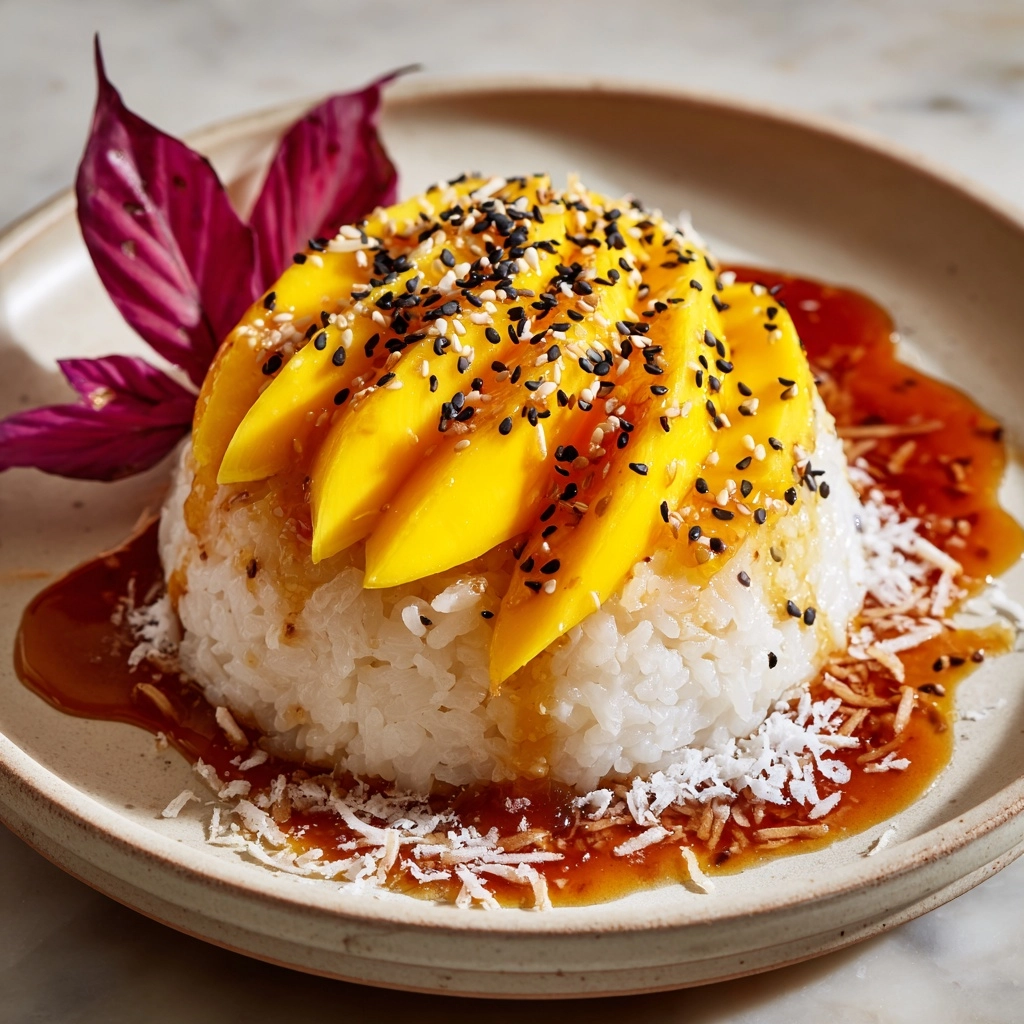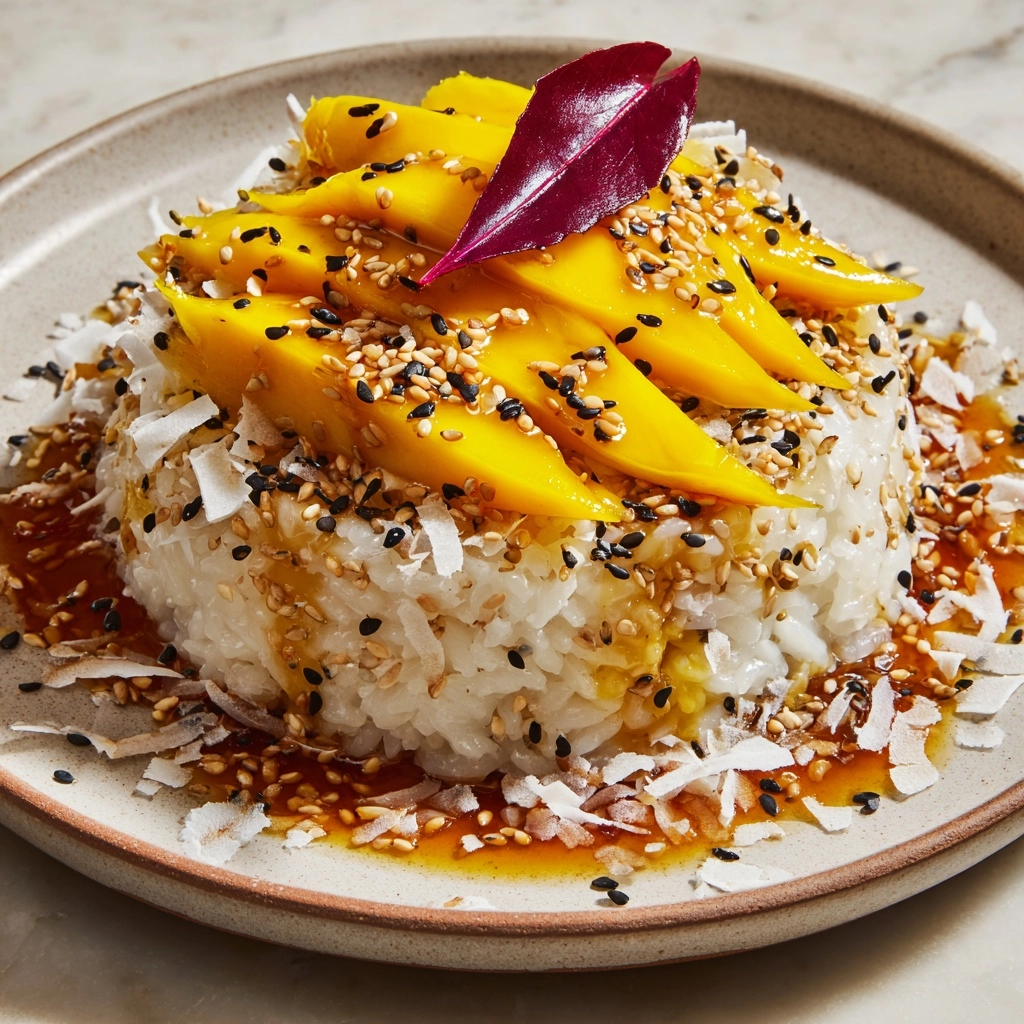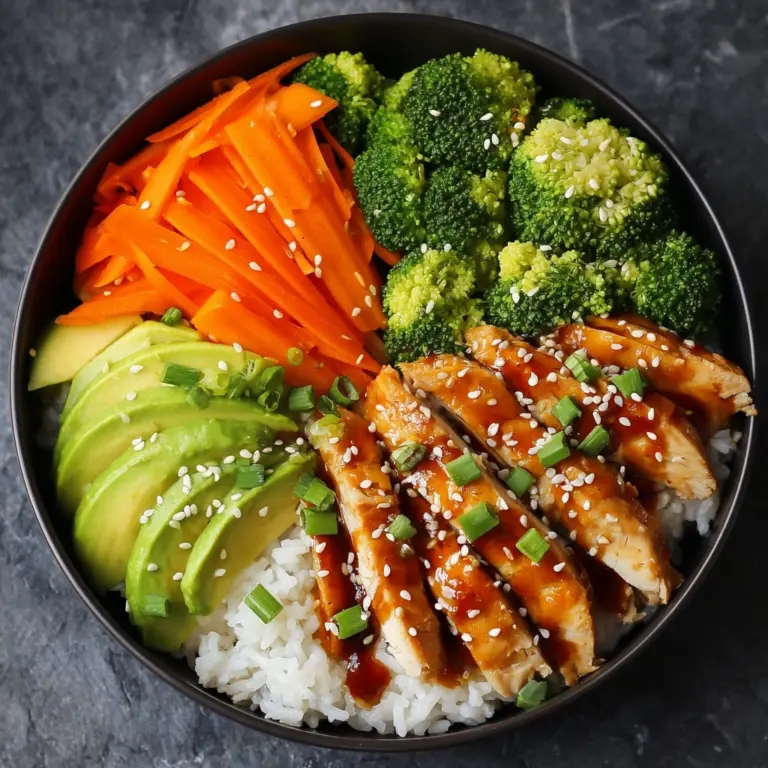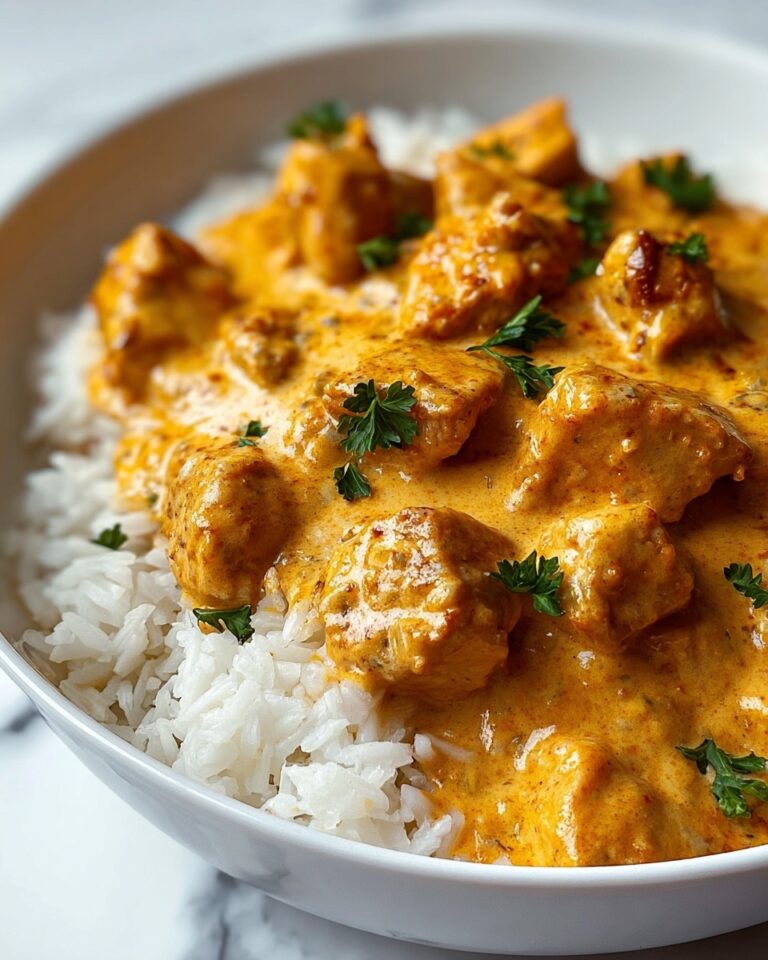Mango Sticky Rice: The Ultimate Guide to Thailand’s Sweet Treat is more than just a dessert—it’s a bite of sunshine that instantly transports you to a bustling night market in Bangkok. The sweet, fragrant mango pairs perfectly with the rich, coconut-scented sticky rice, all finished with just a whisper of salt. Whether you’re creating your first bowl or chasing that authentic Thai flavor at home, this guide will help you master every step with confidence and joy.

Ingredients You’ll Need
All it takes is a handful of key ingredients to create Mango Sticky Rice: The Ultimate Guide to Thailand’s Sweet Treat. Simplicity is the secret here—each ingredient is chosen with care to layer sweetness, richness, and the plush, satisfying chew that defines this classic Thai dessert.
- Glutinous (sticky) rice: This special rice is the foundation; it’s essential for achieving that tender, sticky texture you crave in every bite.
- Water: Used for soaking and steaming the rice, it ensures your grains cook up perfectly plump.
- Canned coconut milk: Don’t skimp or substitute—this adds lush creaminess and gives the rice its signature flavor.
- Granulated sugar: Sweetens the deal, balancing the coconut and brightening the mango.
- Salt: Just a pinch keeps the coconut from tasting flat and enhances the sweetness.
- Ripe mangoes: Choose the juiciest, most fragrant mangoes you can find for a burst of tropical flavor and golden color.
- Toasted sesame seeds or mung beans: These are optional but highly recommended for a delicate crunch and nutty finish.
How to Make Mango Sticky Rice: The Ultimate Guide to Thailand’s Sweet Treat
Step 1: Rinse and Soak Your Rice
The journey to heavenly sticky rice starts with a good rinse! Place your glutinous rice in a large bowl and wash it under cold water, swirling with your fingers, until the water runs clear. This step removes excess starch, helping the grains cook up tender without becoming gummy. Soak the rinsed rice in fresh water for at least 4 hours (or overnight for the creamiest texture).
Step 2: Steam the Rice to Perfection
After soaking, drain the rice thoroughly. Now comes the fun part—give your rice a gentle steam using a bamboo steamer lined with cheesecloth, or a fine mesh over a pot of boiling water. Cover and steam for 20 to 25 minutes, checking once or twice to fluff and ensure even cooking. You want grains that are soft, glossy, and cling together in a tempting mound.
Step 3: Prepare the Creamy Coconut Sauce
While your rice steams, combine the canned coconut milk, sugar, and salt in a small saucepan. Warm slowly over medium heat, stirring just until the sugar dissolves and everything is silky and fragrant. It’s key not to let this mixture boil—gentle heat ensures it stays smooth and luscious, ready to be absorbed by the warm rice.
Step 4: Infuse the Sticky Rice
Once the rice is hot and tender, pile it into a large mixing bowl. Pour in about 1 cup of the warm coconut milk mixture, and gently fold it through the rice with a spatula. Cover the bowl and let it rest for 15 to 20 minutes; during this time, the rice will soak up the sweet coconut flavor and become gloriously creamy throughout.
Step 5: Prep Your Mango and Garnishes
While the rice rests, peel and slice your ripe mangoes into neat, tempting segments. If you like, toast a sprinkle of sesame seeds or mung beans in a dry pan for a few minutes until fragrant—this adds an irresistible crunch and nutty contrast.
Step 6: Assemble and Serve
To serve, mound portions of sticky rice onto plates. Layer with those golden mango slices, drizzle generously with the remaining coconut sauce, and scatter your toasted garnish on top. Serve Mango Sticky Rice: The Ultimate Guide to Thailand’s Sweet Treat at room temperature or just lightly chilled for the most enticing texture and flavor.
How to Serve Mango Sticky Rice: The Ultimate Guide to Thailand’s Sweet Treat

Garnishes
The magic is in the details! Sprinkle lightly toasted sesame seeds or crispy mung beans over the top to add a pop of texture and a nutty finish that plays beautifully against the creamy rice and juicy mango. A tiny pinch of extra salt is optional but can really make those flavors sing.
Side Dishes
This luscious dessert stands tall on its own, but if you’re serving a Thai meal, a cup of jasmine green tea or a refreshing scoop of coconut sorbet alongside your Mango Sticky Rice: The Ultimate Guide to Thailand’s Sweet Treat creates the perfect ending. It’s also charming with a plate of sliced tropical fruit for an extra burst of color and flavor.
Creative Ways to Present
Don’t be afraid to have fun! Shape the sticky rice into small rounds or use a cup to mold it into domes for an elegant restaurant-style look. For special occasions, alternate layers of rice and mango in a glass for a parfait, or serve in mini dessert cups at parties. There are endless possibilities to showcase Mango Sticky Rice: The Ultimate Guide to Thailand’s Sweet Treat in your own creative way.
Make Ahead and Storage
Storing Leftovers
To keep your Mango Sticky Rice: The Ultimate Guide to Thailand’s Sweet Treat just as dreamy for later, store components separately. Keep the sticky rice and coconut sauce in airtight containers in the fridge for up to 3 days. Slice the mangoes just before serving to keep them fresh and vibrant.
Freezing
While fresh is always best, you can freeze sticky rice if you want to get ahead. Allow the rice to cool completely, then portion into airtight bags or containers. The coconut sauce and mango don’t freeze as well—so make those fresh when you plan to serve!
Reheating
Gently rewarm sticky rice in the microwave or steam it with a splash of water to revive that signature soft, sticky texture. Warm the coconut sauce separately, then assemble with fresh mango for a treat that tastes just like new.
FAQs
Is there a difference between glutinous rice and regular rice?
Absolutely! Glutinous rice, sometimes labeled as sweet or sticky rice, has a unique starch content that gives it a wonderfully chewy, sticky texture—regular rice just won’t achieve the same result in Mango Sticky Rice: The Ultimate Guide to Thailand’s Sweet Treat.
Can I use fresh coconut milk instead of canned?
Yes, and it’s delicious! Fresh coconut milk makes the sauce ultra-luxurious. Just remember to taste and adjust the amount of sugar and salt, as the flavor can be lighter and less sweet than canned.
What type Dessert
Look for ripe, fragrant varieties like Ataulfo, Nam Dok Mai, or Keo Savoy. These have a lovely sweetness, juicy texture, and deep orange color that’s perfect for Mango Sticky Rice: The Ultimate Guide to Thailand’s Sweet Treat.
Can I make this dessert vegan and gluten free?
Fantastic news—all the ingredients are plant-based and naturally gluten-free! Mango Sticky Rice: The Ultimate Guide to Thailand’s Sweet Treat is a dessert everyone can enjoy, no swaps needed.
Can I prepare the sticky rice without a steamer?
Yes! If you don’t have a bamboo steamer, use a fine mesh strainer or colander set over a pot of simmering water and cover tightly. Just be sure to check for even cooking and fluff halfway through.
Final Thoughts
If you’ve ever wanted to recreate the magic of Thai street food at home, Mango Sticky Rice: The Ultimate Guide to Thailand’s Sweet Treat is the recipe to start with. It’s sweet, creamy, and honestly, a little bit dreamy—give it a try and share the sunshine with your own family and friends!







